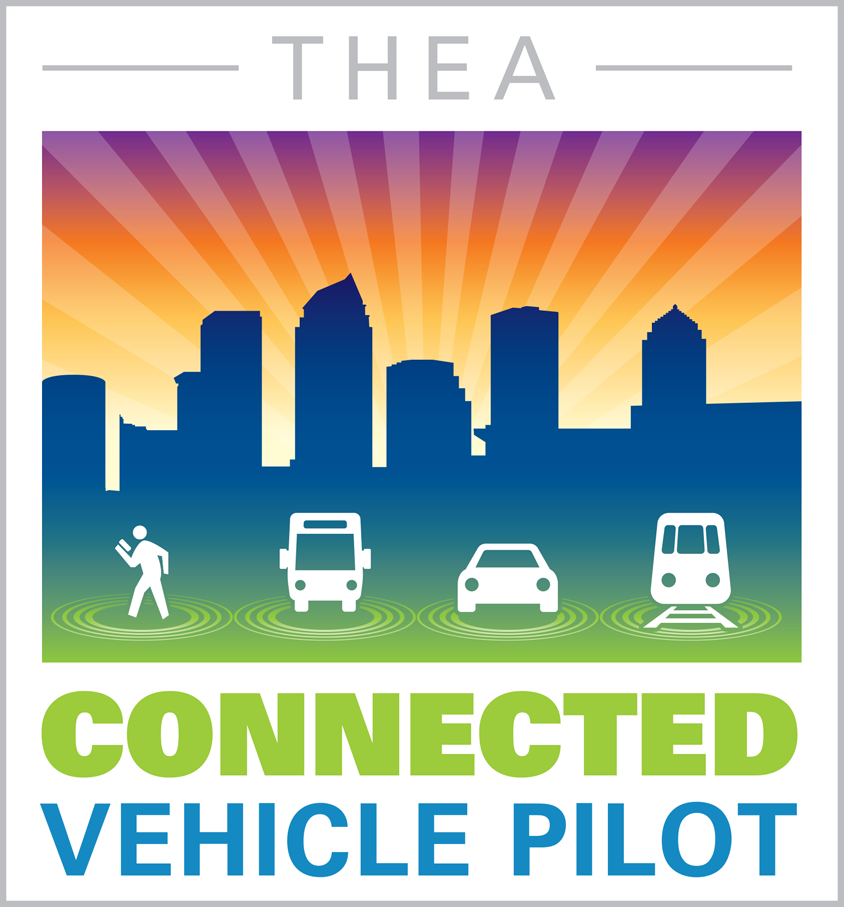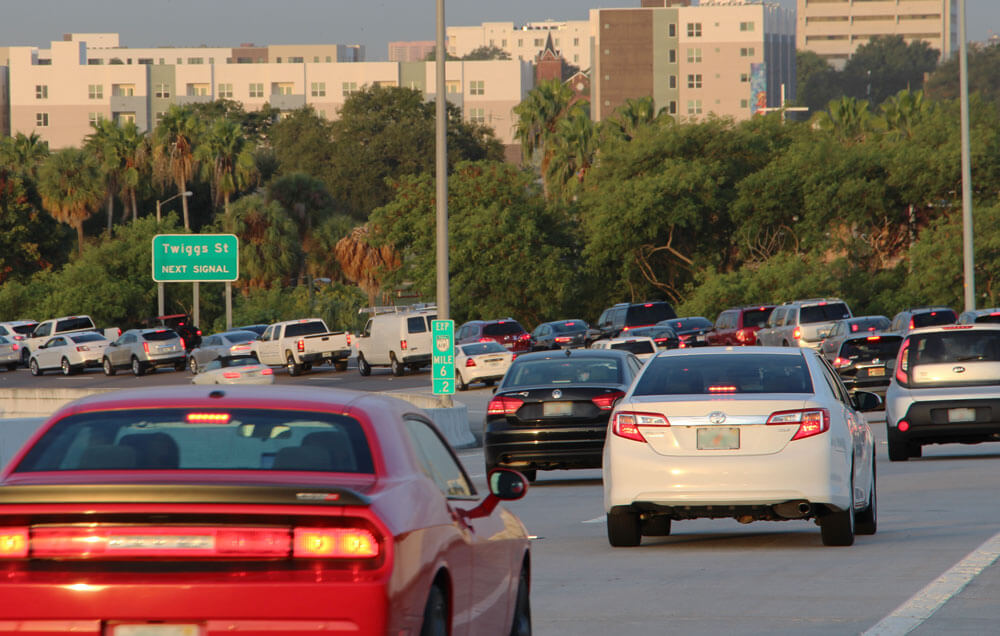
Drivers of connected vehicles on the Lee Roy Selmon Expressway’s Reversible Express Lanes receive warnings when cars on the road ahead have suddenly slowed down or come to a stop. Their vehicles also alert them when they are approaching the curve at an unsafe speed.
The Emergency Electronic Brake Light (EEBL) application warns the driver of a connected vehicle when hard braking is occurring in the traffic ahead.
The End of Ramp Deceleration Warning (ERDW) application warns the driver of a connected vehicle that is approaching the downtown end of the Lee Roy Selmon Expressway’s Reversible Express Lanes (REL) at an unsafe speed. The application recommends a safe speed based on the length of the queue ahead.
The Forward Collision Warning (FCW) application warns the driver of a connected vehicle when a collision with another vehicle ahead is imminent.
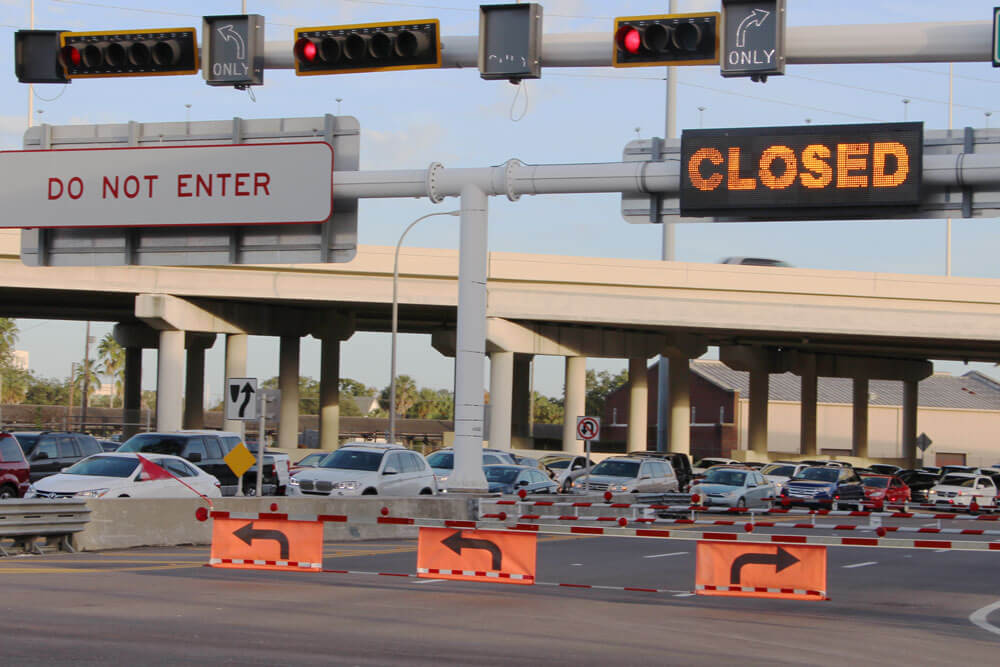
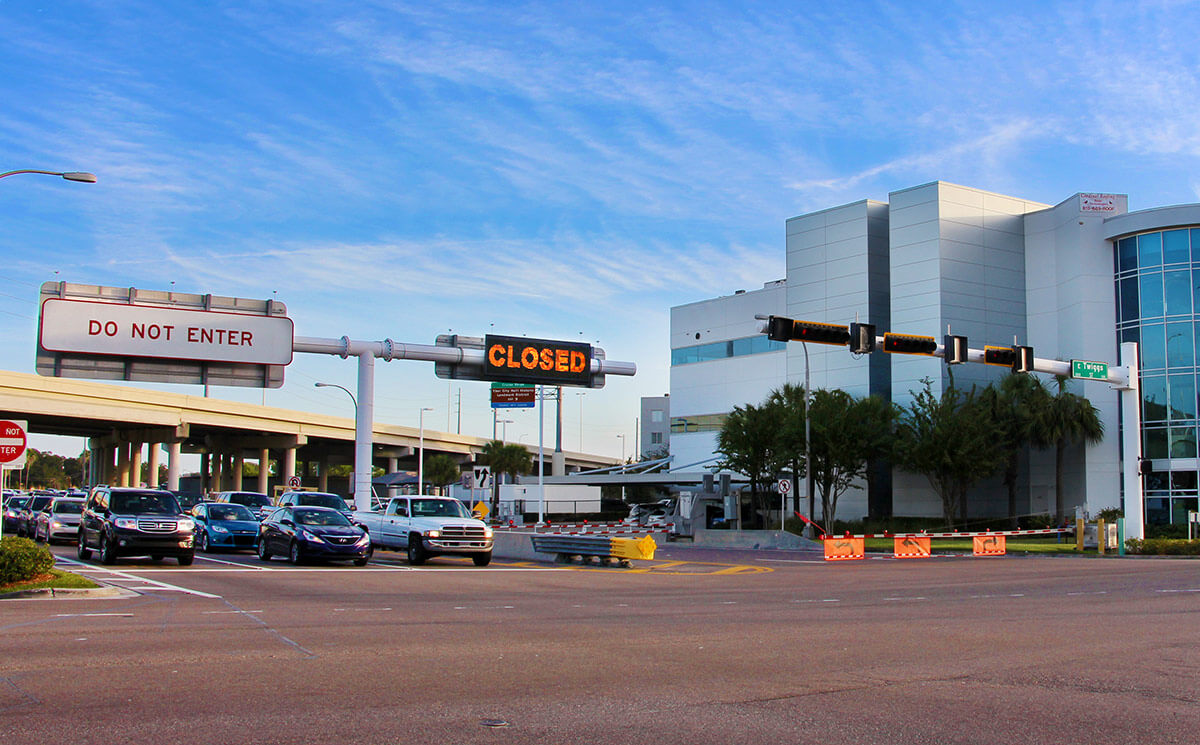
Drivers of connected vehicles receive warnings when they are about to enter the Lee Roy Selmon Expressway’s Reversible Express Lanes when driving in the wrong direction. Other connected vehicles on the express lanes also receive warnings when a wrong-way driver is approaching.
The Wrong Way Entry (WWE) application warns the driver of a connected vehicle that is on a trajectory to enter the Lee Roy Selmon Expressway’s Reversible Express Lanes (REL) moving in the wrong direction. Other connected vehicles on the express lanes will also receive a warning when a wrong-way driver is approaching.
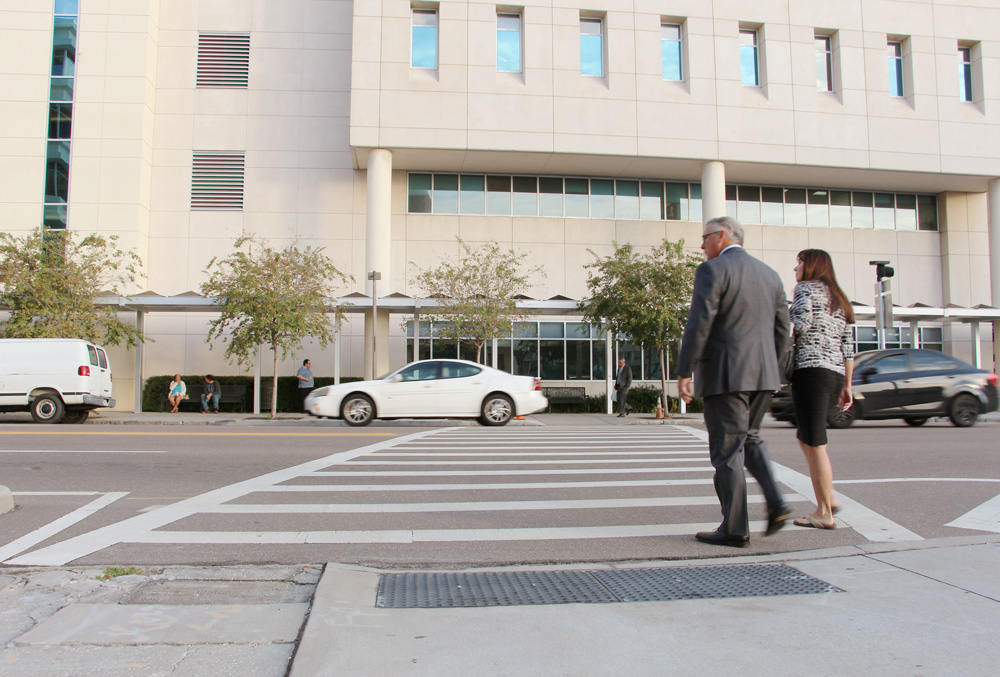
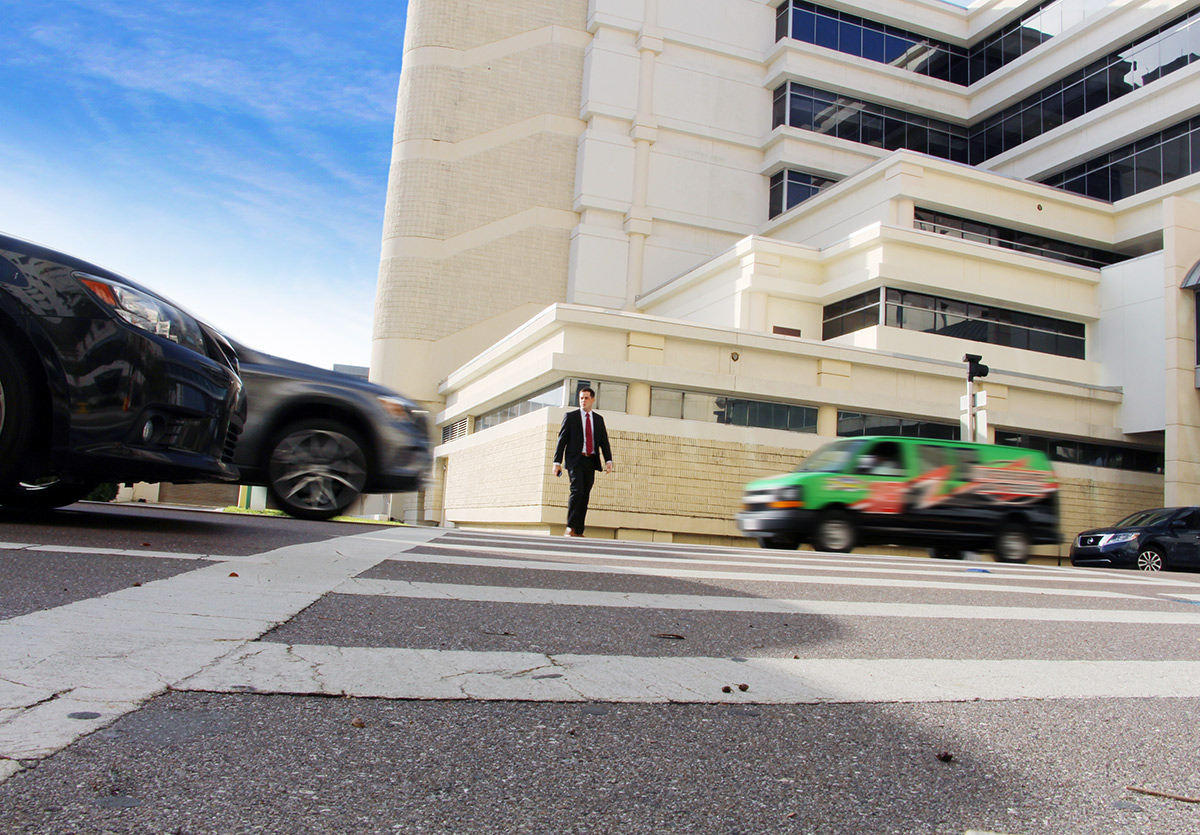
The THEA Connected Vehicle Pilot is employing connected vehicle technology at the midblock crosswalk on East Twiggs Street at the Hillsborough County Courthouse to improve pedestrian safety. When sensors detect a pedestrian in the crosswalk, roadside equipment broadcasts that information to connected vehicles in the vicinity, and their drivers will receive an alert.
The Forward Collision Warning (FCW) application warns the driver of a connected vehicle when a collision with another vehicle ahead is imminent.
The Intersection Movement Assist (IMA) application warns the driver of a connected vehicle when it is not safe to enter an intersection.
The Pedestrian in Signalized Crosswalk (PED-X) application warns the driver of a connected vehicle when a pedestrian is detected in a crosswalk that lies in the vehicle’s path.

The Tampa Connected Vehicle Pilot plans to enhance pedestrian safety by developing a smartphone app that communicates with traffic signals at several intersections on Channelside Drive. Pedestrians running the app on a mobile device would receive a “walk” signal when they approach the crosswalk at one of these intersections.
The Intelligent Signal System (I-SIG) application uses information from connected vehicles to optimize traffic signal timing and improve traffic flow.
The Probe Data Enabled Traffic Monitoring (PDETM) application collects real-time traffic data from connected vehicles to help transportation managers improve system-wide performance.
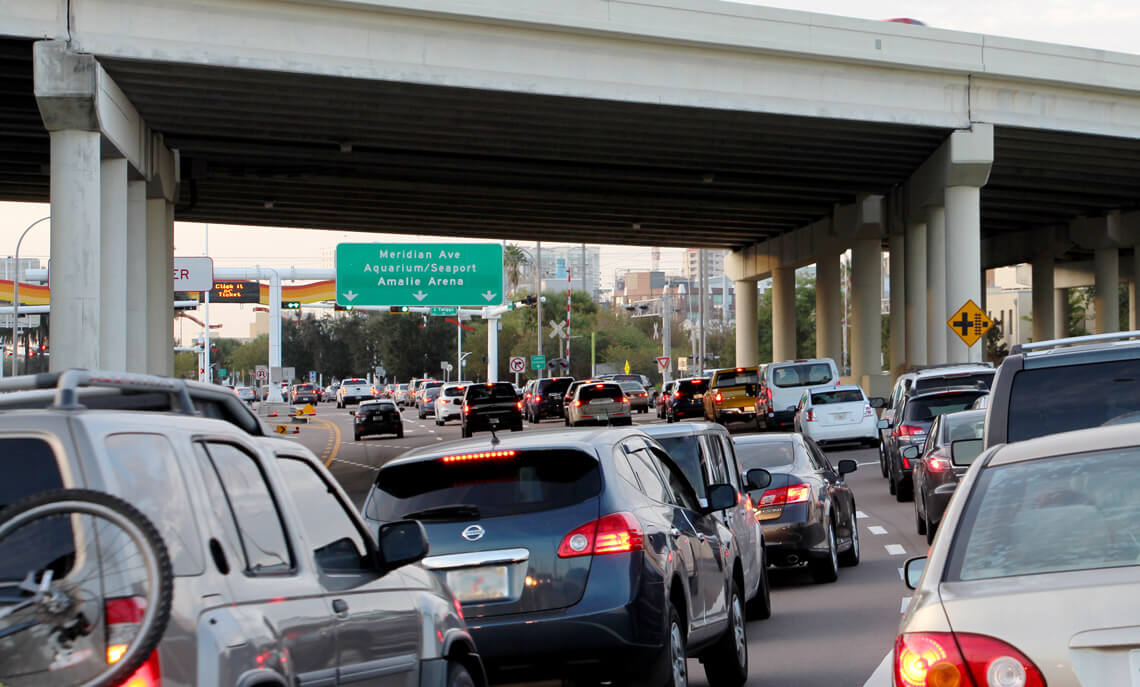
Connected vehicles communicate with some traffic signals to optimize signal timing and improve traffic flow. Drivers of connected vehicles also receive a warning when it is not safe to enter an intersection—for example, if another connected vehicle is approaching on a cross street that is out of the driver’s view.
The Intelligent Signal System (I-SIG) application uses information from connected vehicles to optimize traffic signal timing and improve traffic flow.
The Mobile Accessible Pedestrian Signal (PED-SIG) application enables a pedestrian’s smartphone to request a “walk” signal when the pedestrian is on a path to cross the street at an intersection controlled by a traffic signal.
The Probe Data Enabled Traffic Monitoring (PDETM) application collects real-time traffic data from connected vehicles to help transportation managers improve system-wide performance.
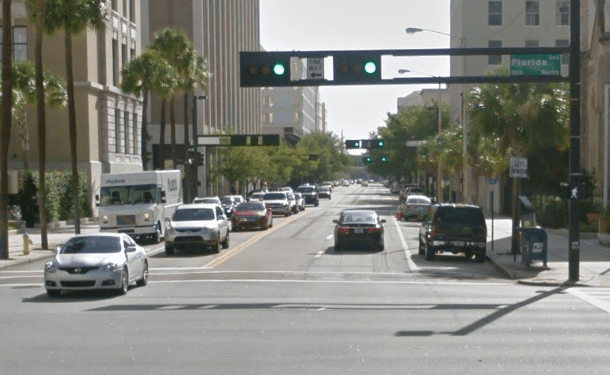
Connected vehicles communicate with some traffic signals to optimize signal timing and improve traffic flow. Drivers of connected vehicles also receive a warning when it is not safe to enter an intersection—for example, if another connected vehicle is approaching on a cross street that is out of the driver’s view.
The Intelligent Signal System (I-SIG) application uses information from connected vehicles to optimize traffic signal timing and improve traffic flow.
The Probe Data Enabled Traffic Monitoring (PDETM) application collects real-time traffic data from connected vehicles to help transportation managers improve system-wide performance.
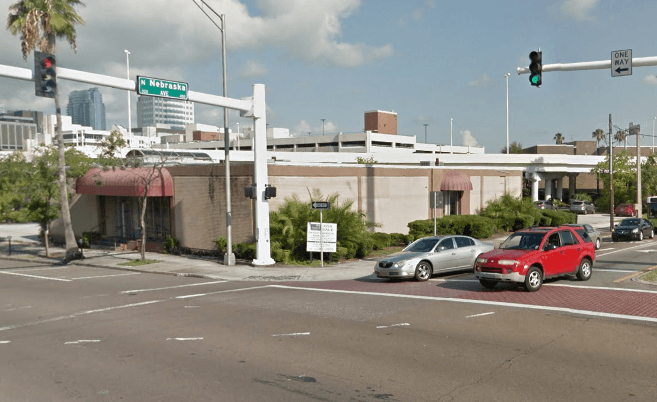
Some traffic signals on Nebraska Avenue will communicate with connected vehicles to improve traffic flow in real time, staying green longer when traffic is heavy.
The Intelligent Signal System (I-SIG) application uses information from connected vehicles to optimize traffic signal timing and improve traffic flow.
The Probe Data Enabled Traffic Monitoring (PDETM) application collects real-time traffic data from connected vehicles to help transportation managers improve system-wide performance.
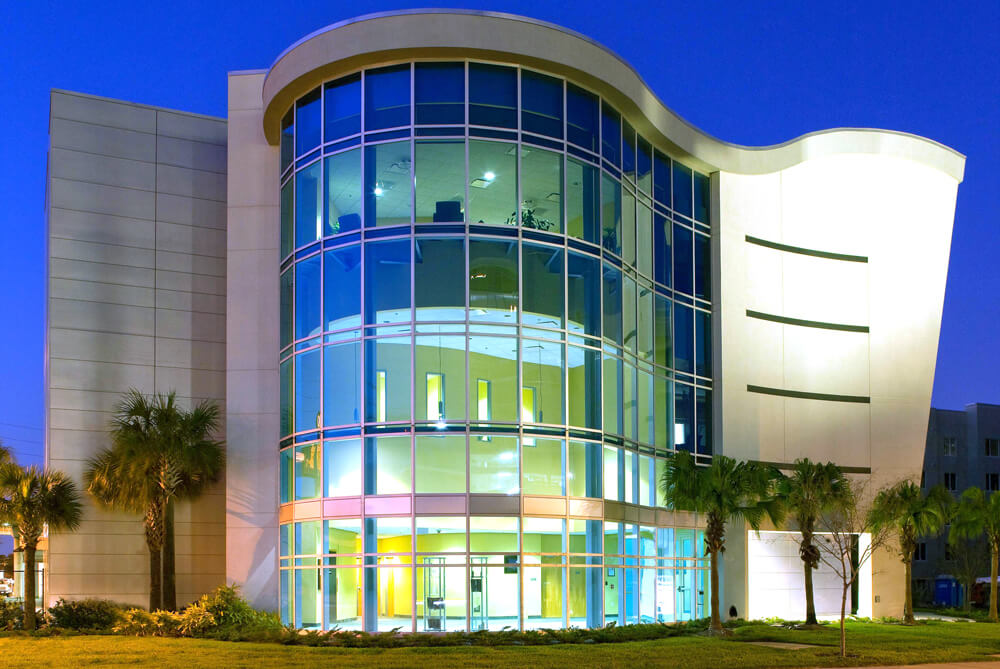
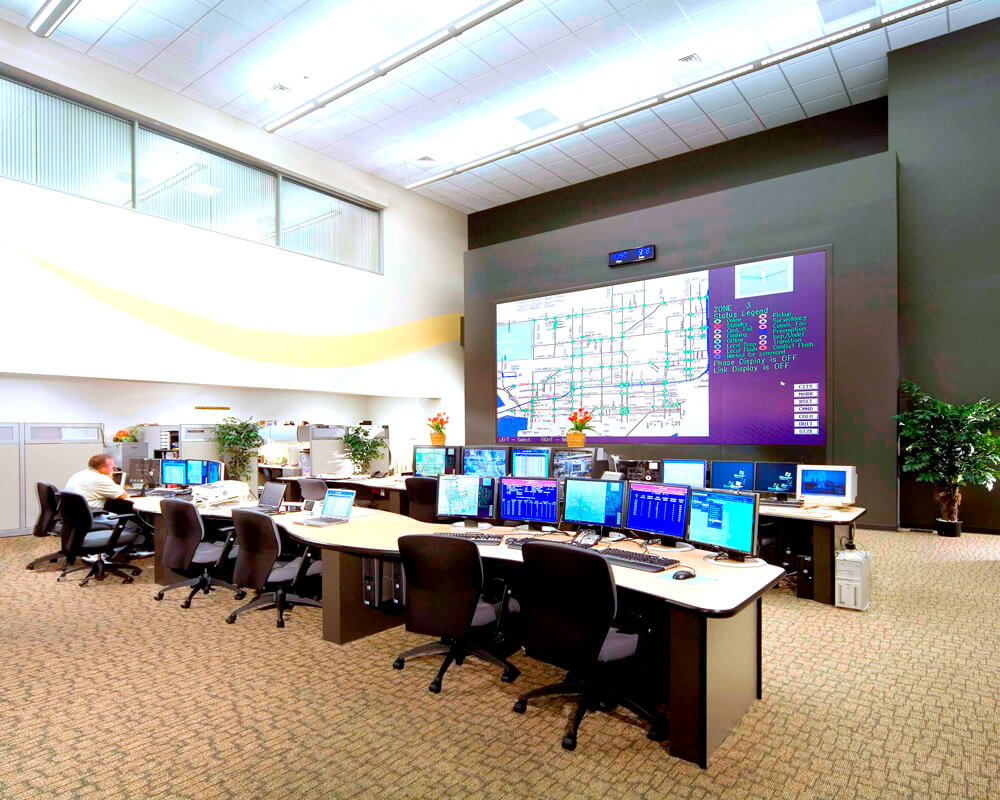
The City of Tampa’s Transportation Management Center will capture real-time data from connected vehicles to improve the flow of traffic throughout the area. (No personally identifiable information will be collected.)
The Probe Data Enabled Traffic Monitoring (PDETM) application collects real-time traffic data from connected vehicles to help transportation managers improve system-wide performance.
